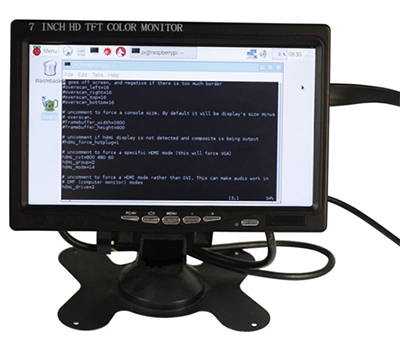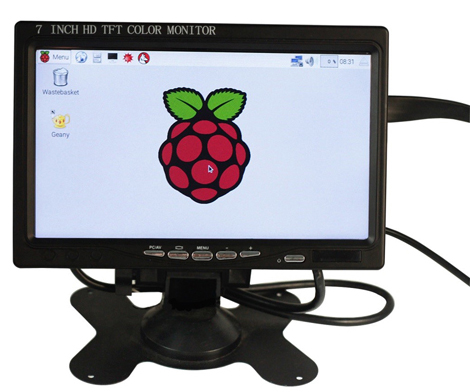Raspberry Pi 7" HD 1024*600 TFT LCD Screen Display Settings
Contents
[hide]Premise
When applying the Raspberry Pi 7" HD 1024*600 TFT LCD Screen Display, you may encounter the issues:
Issue 1: Wrong Resolution.If you encounter the difficulties in reading too small characters or incomplete display, that would be wrong resolution.
Issue 2:No Sound from the Monitor under Raspbian
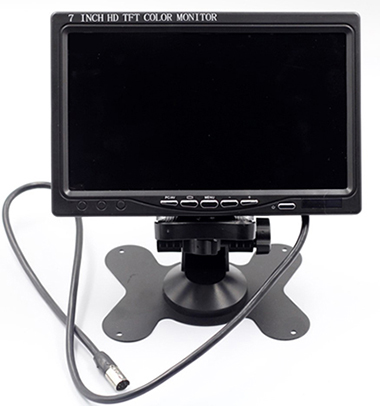
Specification
- Screen size: 7 inch Display
- Ration: 16:9/4:3 adjustable
- Display Component: Color TFT-L
- Resolution: 1024*600 Pixels
- Support adjust the brightness, contrast, color
- Input Signal: PC(VGA),AV1,AV2,HDMI
- Power: DC 12V
- Consumption: 6W
- Video: two way video input
- Frequency: PAL/NTSC
- Rear watching: image can be changed left and right
- Operate mode: the key operation and remote control
- Automatically displays blue screen when no signal
- Parking rearview priority
- Product Dimensions: 174*114*33mm (L*W*D)
The display is available at:
http://www.sunfounder.com/raspberry-pi-7-hd-800-480-tft-lcd-screen-display.html
Solution of issue 1
To solve issue, here we should adjust the screen display and modify the /boot/config.txt file. Take the following procedures.
Step 1: Adjust Screen
Press MENU button and then press rotation button (second button)to switch to the Function menu. Then press + button to enter Function menu, press rotation button again to switch to Display Ratio. Next press + to enter Display Ratio menu, press rotation button to switch to Auto, and + to confirm.
Step 2: Open config.txt
There are two methods to do so.
Method A:
First prepare a computer on Windows, Mac or Linux, and a TF card on which the Raspbian system has been burnt. Plug the TF card into the computer with a card reader.
Now, open /boot and find the config.txt file. If your computer runs on Windows, DO NOT open the file by Word (also better not notepad) in case of format issues. You are advised to use other edit tools like Notepad++ .
Method B:
Log in to Raspberry Pi remotely. Run the command to edit config.txt
sudo nano /boot/config.txt
Step 3: Modify the /boot/config.txt file
In either way, now the file config.txt is opened.
1) Define a custom CVT mode (since Raspberry Pi uses the standard rate when 1024x600 is not included, you need to set the aspect ratio as 16:9, i.e. 1024x576) add the following lines below #hdmi_force_hotplug=1.
hdmi_cvt=1024 576 60 3 0 0 0
hdmi_cvt=<width> <height> <framerate> <aspect> <margins> <interlace>
| Value | Default | Description |
|---|---|---|
| width | (required) | width in pixels |
| height | (required) | height in pixels |
| framerate | (required) | framerate in Hz |
| aspect | 3 | aspect ratio 1=4:3, 2=14:9, 3=16:9, 4=5:4, 5=16:10, 6=15:9 |
| margins | 0 | 0=margins disabled, 1=margins enabled |
| interlace | 0 | 0=progressive, 1=interlaced |
| rb | 0 | 0=normal, 1=reduced blanking |
2) Find the following lines (If there is a "#" mark at the beginning of any of the three lines, which means they are comments, delete the mark. The asterisk "*" represents the value.
hdmi_group=* hdmi_mode=* hdmi_drive=*
3) Modify the value, like this:
hdmi_group=2 hdmi_mode=87 .... hdmi_drive=2
hdmi_group=2 means DMT (Display Monitor Timings; the standard typically used by monitors)
hdmi_mode=87 indicates the resolution bit.
hdmi_drive=2 selects the Normal HDMI mode.
For more details about configuring config.txt, refer to Raspberry Pi official website: https://www.raspberrypi.org/documentation/configuration/config-txt.md.
After the modification is done, save and exit.
Step 4: Connect Raspberry Pi
If you change the commands on your PC, after mounting the TF card safely, plug it into the Raspberry Pi. Then connect the power of the Raspberry Pi and the display.
If you log in the Raspberry Pi remotely with ssh, type in the command sudo reboot.
Step 5: Select HDMI mode
After reboot, if the screen is still black, press the leftmost PC/AV button and select the HDMI mode. The screen will be rebooted and then display the homepage.
Solution of issue 2
If the monitor makes no sound under Raspbian, you may try going to raspi-config -> Advanced Options and select Force HDMI.
Click on the black icon, which represents terminal, on the top left:
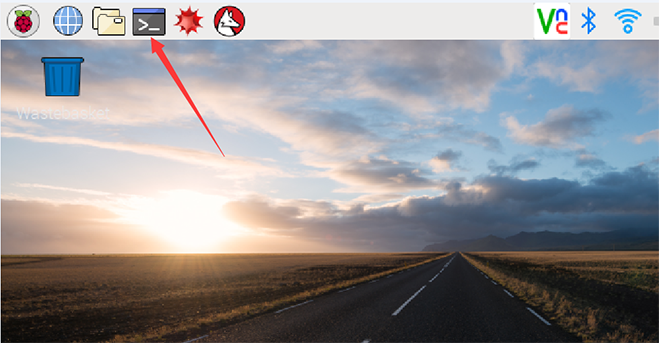
A terminal now pops up. Run sudo raspi-config:
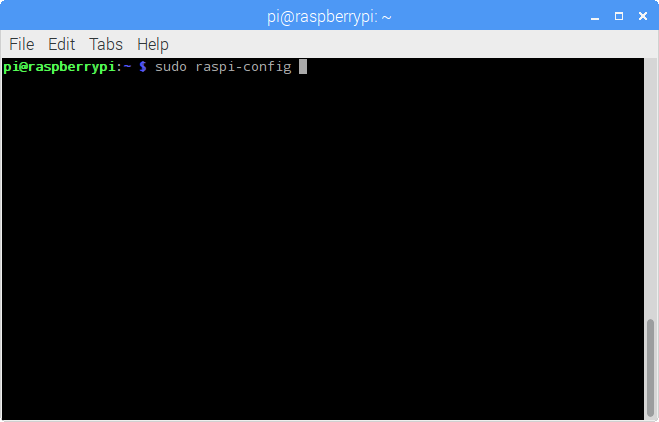
Select Advanced Options by pressing the up/down arrow key:
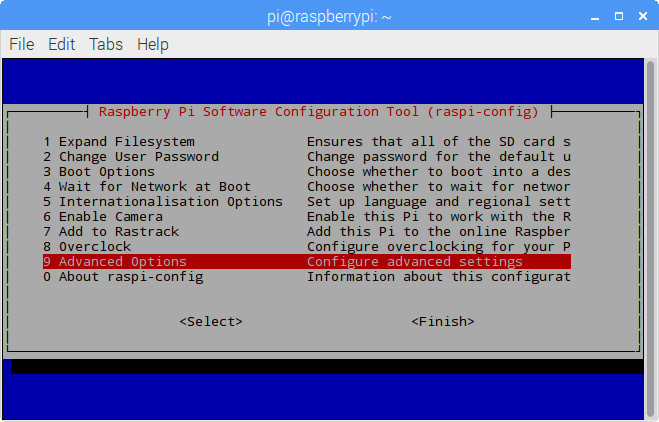
Press Enter.
Next, on the pop-up window, select Audio in the same way:
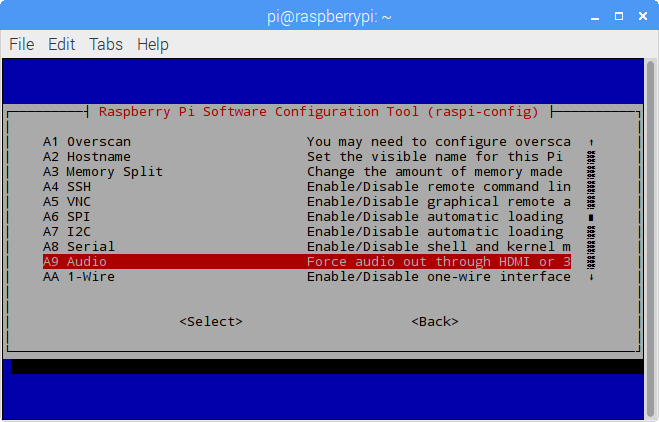
Press Enter.
On the window Choose the audio output, select Force HDMI:
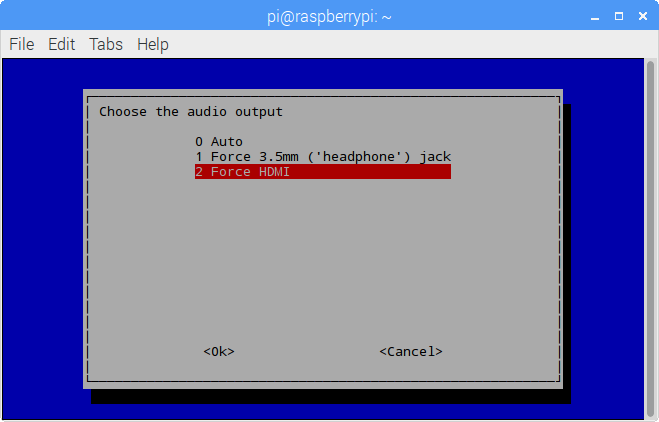
Press Enter.
Then return to the main menu and select Finish with the left/right key and press Enter to confirm and exit.
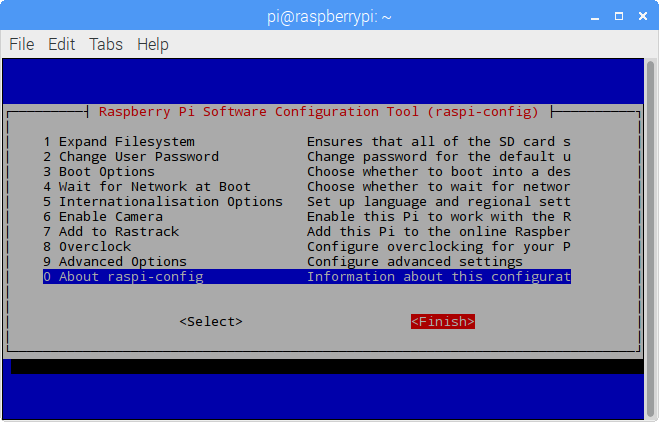
Now the speaker of the monitor should make sounds. Try to play a video on YouTube!
If you have any questions, contact us by email: support@sunfounder.com. And please try to describe your problem as clearly as possible. The more information you provide, the better and faster we can help solve your issue!
